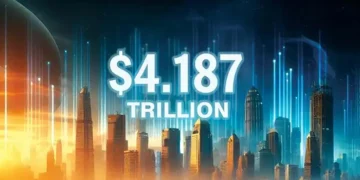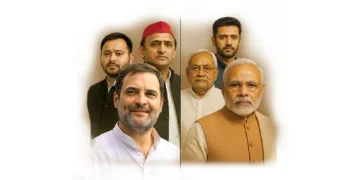Munish Gupta
INDIA is not just catching up, it is overtaking; the country has just surpassed Japan to become the fourth-largest economy in the world.
Citing International Monetary Fund data, Niti Aayog CEO BVR Subrahmanyam has said that till 2024, India was the fifth-largest economy, but “now it is only the US, China and Germany, which are larger than India.”
“If we stick to what is being planned and what is being thought through, in 2.5- 3 years, we will be the third-largest economy,” Subramanian said. It is due to the pace of the economy – fastest growing in the world – under Prime Minister Narendra Modi’s leadership that India could achieve this feat. The IMF and global rating agencies have projected that the pace is likely to continue.
In its World Economic Outlook (WEO) report released in April, the IMF had said that India’s nominal gross domestic product (GDP) is projected to rise to $4.187 trillion surpassing Japan’s $4.186 trillion. According to the IMF data, India’s per capita income has doubled from $1,438 in 2013-14 to $2,880 in 2025.
Growth outlook stable
“For India, the growth outlook is relatively more stable at 6.2 per cent in 2025, supported by private consumption, particularly in rural areas,” the IMF had said. Its report projected the global growth at 2.8 per cent in 2025, lower by 0.5 percentage points than estimated earlier.
A Niti Aayog approach paper, titled ‘Viksit Rajya For Viksit Bharat @ 2047′, said from being considered a part of the ‘fragile five’ economies of the world, India rose to become the top five economies of the world in just a decade. The World Bank defines high-income countries as those with an annual per capita income of more than $14,005. India has the potential and aims to be a high-income country by 2047. The approach paper said a Viksit Bharat @ 2047 will be a $30- trillion economy.
Strategic interventions
“It will have all the attributes of a developed country with a per capita income that is comparable to the high-income countries of the world today,” the paper said.

According to the paper, in order to achieve the goal of a Viksit Bharat by 2047, an overall framework for strategic interventions and reforms based on six key building blocks – with a total of 26 themes covered across all the building blocks – has been identified. In the group of emerging market and developing economies, China will witness a particularly sharp decline in its GDP growth over 2025–50, the IMF report projects. India, with its relatively favourable near-term demographics, is projected to maintain its growth rate before a smaller decline sets in over 2050-2100.





























